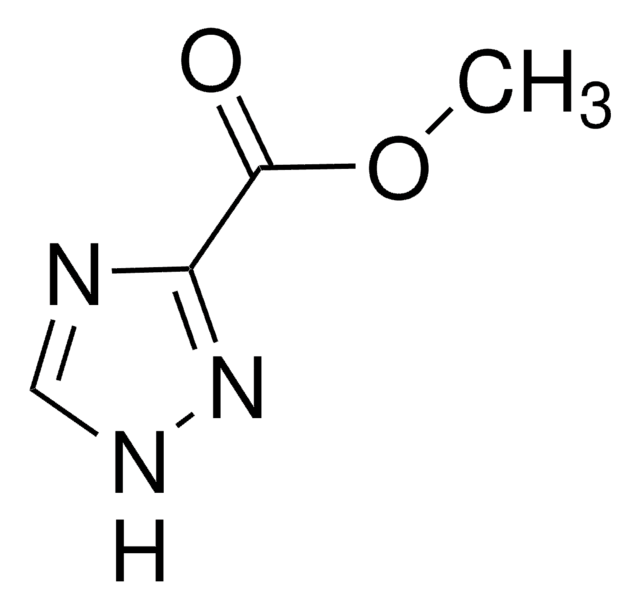333662
1H-1,2,3-Triazole
97%
Synonym(s):
2,3-Diazapyrrole, 2H-1,2,3-Triazole, Osotriazole, Pyrrodiazole, Triazacyclopentadiene
About This Item
Recommended Products
Assay
97%
form
liquid
refractive index
n20/D 1.498 (lit.)
bp
203 °C/752 mmHg (lit.)
mp
23-25 °C (lit.)
density
1.192 g/mL at 25 °C (lit.)
SMILES string
c1c[nH]nn1
InChI
1S/C2H3N3/c1-2-4-5-3-1/h1-2H,(H,3,4,5)
InChI key
QWENRTYMTSOGBR-UHFFFAOYSA-N
Related Categories
General description
Application
- Crystalline framework materials: Research on triazole carboxylic acid ligand has demonstrated its application in smart crystalline framework materials, notably for fluorescence sensing and catalytic reduction of p-nitrophenol, illustrating its utility in chemical sensing and environmental applications (Lv et al., 2023).
- PXR receptor modulation: 1H-1,2,3-Triazole-4-carboxamides have been optimized as potent and selective inverse agonists and antagonists of the PXR receptor, providing insights into the design of receptor-specific drugs (Li et al., 2022).
- Large-scale synthesis: The large-scale synthesis of a Notum inhibitor employing a modified Sakai reaction illustrates the importance of 1H-1,2,3-triazole in the production of biochemical reagents, which can be essential in medical research and drug development (Atkinson et al., 2022).
Signal Word
Warning
Hazard Statements
Precautionary Statements
Hazard Classifications
Eye Irrit. 2 - Skin Irrit. 2 - STOT SE 3
Target Organs
Respiratory system
Storage Class Code
10 - Combustible liquids
WGK
WGK 3
Flash Point(F)
224.6 °F - closed cup
Flash Point(C)
107 °C - closed cup
Personal Protective Equipment
Certificates of Analysis (COA)
Search for Certificates of Analysis (COA) by entering the products Lot/Batch Number. Lot and Batch Numbers can be found on a product’s label following the words ‘Lot’ or ‘Batch’.
Already Own This Product?
Find documentation for the products that you have recently purchased in the Document Library.
Customers Also Viewed
Our team of scientists has experience in all areas of research including Life Science, Material Science, Chemical Synthesis, Chromatography, Analytical and many others.
Contact Technical Service










